Hideo Kojima's world tour: what do these clues tell us about his new game?
Engine and design cues from the best in the business
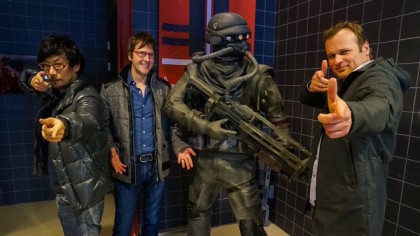
Introduction
It's official: Hideo Kojima's widely reported world tour was a search for an engine and inspiration for his new game.
The tour saw the Metal Gear Solid developer visit developers throughout the world, including studios owned by Sony, EA and Ubisoft.
Kojima has yet to reveal what form his new game will end up taking, but the collective works of the various studios gives us some tantalising clues about what might be to come.
What engine has he chosen to use? Which games have inspired him? Let us speculate.
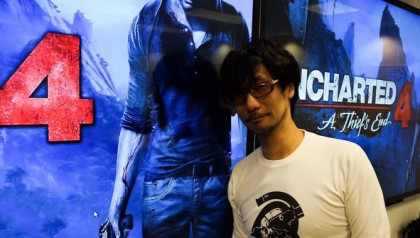
Naughty Dog
Naughty Dog is a studio that has set the bar for how story in big budget games should work. From The Last of Us' incredibly acted cutscenes to the incidental bits of dialogue that pepper every mission in Uncharted, the studio has consistently combined solid acting performances with excellent technical artistry.
More than any other games designer, Kojima's games have been consistently remembered for their stories. At a time when most other games didn't even include full voice acting, Kojima's first Metal Gear Solid devoted hours to non-interactive cinematic cutscenes.
If Kojima takes any cues at all from Naughty Dog, we hope it ends up being in the motion capture department.
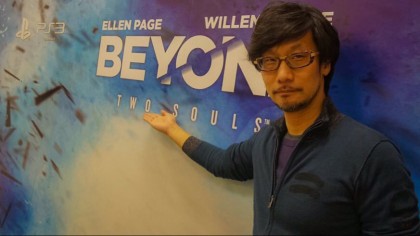
Quantic Dream
Quantic Dream, the French studio who are perhaps best know for Fahrenheit (titled Indigo Prophecy in the US) and PS3 thriller Heavy Rain.
In a similar vein to Naughty Dog, Quantic Dream have made a name for themselves with story-heavy games that have been powered by some impressive motion-capture work, especially facial motion-capture.
In fact the studio was so impressed with its facial animation that the loading screens in Heavy Rain were literally just closeups of the game's character's faces.
We would be very happy to see characters even half as good looking as those in Heavy Rain make it into Kojima's next game. But please, don't let it include the same quick-time event heavy gameplay.
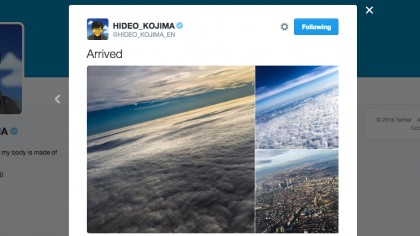
Crytek
For years, one simple question was the bane of PC gamers worldwide.
"Does it run Crysis?"
The question typifies what Crysis-developer Crytek is know for. Vast, technically impressive game engines that took a mammoth PC to run.
Later Crysis games would end up coming to the low-powered consoles, but at its core the studio will always be known as the brains behind the highest of the high-end.
Crytek wasn't originally on Kojima's list of studios to visit, but a tweet from Crytek's twitter account changed all that.
Crytek's games have always existed in the middle ground between traditional corridor-based shooters and fully open-world games. Both Far Cry and Crysis featured wide-open levels that gave you the freedom to approach encounters in a variety of ways.
Previous Metal Gear Solid games - up until 5, which moved towards a completely open world - would have suited Crytek's engine with their linear levels that were still open enough to offer a large amount of freedom.
Kojima's games have never been a slouch in the graphics department, and if Kojima ends up using Crytek's engine this trend could continue into his next game. Just don't expect it to be open world if it does.
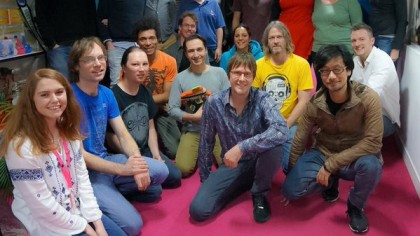
Media Molecule
In recent interviews Kojima appears to have been more taken with the staff of Media Molecule than their technology.
"There are lots of women working there [at Media Molecule], for one thing. That's a strange feeling! But at the same time there's a feeling like it's family there." Kojima said in an interview with Eurogamer.
Kojima said that he'd like to achieve this same intimate family feeling in his own studio, which implies he might want to keep his studio small as opposed to the sprawling teams that worked on each Metal Gear Solid title.
Reportedly two hundred people worked on the first MGS, and this number is likely to have risen as the games became bigger and more complex.
But all this focus on staff should not detract from the fact that Media Molecule's Little Big Planet engine was enormously impressive, with a level editor that offered an amount of control that was previously unseen on consoles.
Kojima's games have never previously included any user-generated content, but after leaving Konami anything's possible.
"Media Molecule told me that the kitchen is crucial too," Kojima also said, so we know one solid idea he's taking to his new studio.
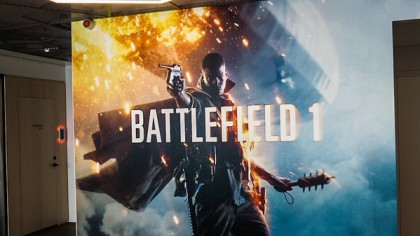
EA Dice
Dice's games have been defined by their massive multiplayer matches, which normally result in half the level being... well... levelled thanks to Dice's strong emphasis on destructible environments.
Kojima's later games such as MGS4 and Peace Walker began to include multiplayer elements, but they've never included anything even remotely destructible elements.
It's always felt strange that although Kojima's games have often featured tanks in addition to giant mechanoid nuclear robots, the smallest wall will always work perfectly as an invincible shield against all incoming attacks.
Destructible environments would also significantly change how any stealth gameplay works in Kojima's next game. Walls that could previously perfectly conceal the player might end up being reduced to rubble in the blink of an eye, forcing the player to adapt their route through the environment on the fly.
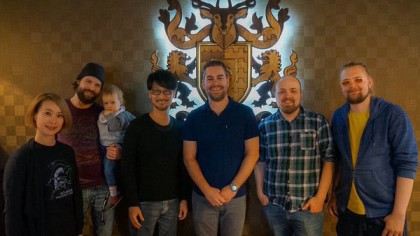
Mojang
Mojang is best known for creating the uber-hit Minecraft, which at this point is a game that needs no introduction.
But similar to Media Molecule, Mojang's titles are about as far from Kojima's catalogue as it's possible to get. In fact, before Minecraft blew up it was primarily the product of just one man, Markus 'Notch' Persson.
Notch doesn't work at Mojang anymore, after having left his company back when it was acquired by Microsoft in 2014, but that doesn't mean Kojima doesn't have anything to learn from the company.
For one thing, Minecraft has perhaps the biggest YouTube following out of any game in the world. Every year thousands of video creators uploading tens of thousands of hours of footage of the game to their channels, and often these videos go on to generate millions of views.
Kojima's games are not unknown on YouTube, but their comparative lack of user-created content means that they're less well suited to the kinds of videos that have served Mojang so well.
We'd be surprised Kojima's next game ends up being user-generated to the same extent Minecraft is - although as we mentioned with Media Molecule, there could certainly be a bit - but we'd be equally surprised if it didn't include at least a cursory glance in the direction of YouTube.
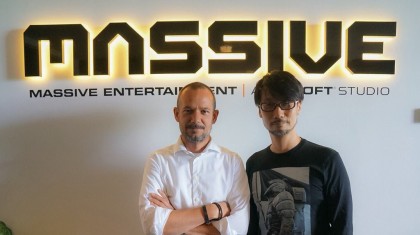
Massive Entertainment
Massive Entertainment is the studio best known for this year's Tom Clancy's The Division after having helped out with development duties on Far Cry 3 and Assassin's Creed: Revelations.
As previously discussed, Kojima's games have sometimes included multiplayer components in addition to their single-player campaigns, but these have often been very separate experiences.
Metal Gear Online felt like a completely separate game from Metal Gear Solid 4, despite being included on the same disk.
The Division, meanwhile, blends the two into a single cohesive experience. You can take your character from single player to multiplayer in a very seamless way.
Kojima has previously explored this in Peace Walker for the PSP, but the feature has never appeared on one of his console games outside of the Peace Walker remake that made it to PS3.
We loved Peace Walker back in the day, and the experience got even better when the game was ported to home consoles, even if the low-fidelity graphics betrayed its roots as a PSP game.
If we could get a console-focussed Peace Walker, with a persistent character that you can train up offline before heading online to play alongside others, we'd be very happy indeed.
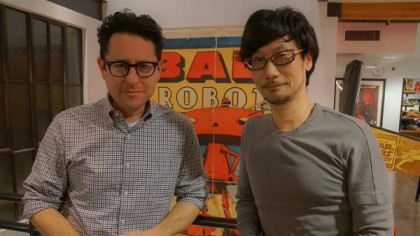
J.J. Abrams
Ok, we know J.J. Abrams isn't a development studio, but his film production company Bad Robot has recently been working with Infinity Blade and Shadow Complex's developer on a new game called SpyJinx.
According to its website, Spyjinx will offer "a unique mix of action strategy gameplay, dynamic world building and RPG character development."
Kojima is famously a massive cinephile, which points towards his meeting with Abrams being more to do with the world of cinema than gaming.
Kojima said he visited Abrams to "inform him about my new studio," but didn't indicate whether he'd taken any inspiration from JJ himself.
Spyjinx has been described as a "live service product" that will run for many years, so if Kojima's next game is to take a similar approach, Abrams could have been a good person to draw inspiration from.
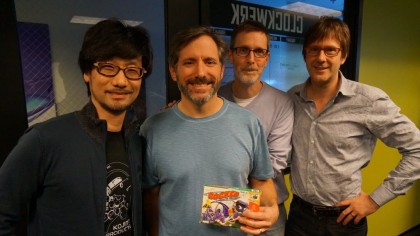
Sucker Punch
Sucker Punch were historically one of Sony's more niche studios until they hit the big time with Infamous back in 2009.
Infamous as a series has always been about setting you loose in a massive city and giving you a seemingly infinite amount of powers to get around. Scaling buildings, flight, and zipping along rail-lines.
Meanwhile Kojima's games have historically seen you limited to running about by foot, and in fact most of the Metal Gear Series sees you crawling about on your stomach to minimise your chances of being spotted.
Metal Gear Solid 5 changed this by giving you a horse and a variety of vehicles to travel around in, but more interesting transport options have always been limited to your enemies.
MGS2 saw you fighting against a bomb-disposal expert on roller-skates, MGS3's The Fury chased you around with a jetpack, and Psycho Mantis from MGS1 could just straight up hover around the room.
It would be great if cues from Sucker Punch lead Kojima to let his next protagonist jump, climb, and fly with the same grace as Infamous' Cole MacGrath.

Guerrilla Games
It's hard not to mention Guerrilla games without immediately thinking of the Helghast, the iconic enemies in the Killzone franchise.
Their orange gas masks have come to define the dark industrial look of the series, the gameplay of which has often paled in comparisons to its visuals.
It's hard to argue that Gorilla Games doesn't have some seriously impressive technology powering their games. However, engine aside, it's hard to know what design cues Kojima could end up taking from Guerilla Games, whose titles have always played it safe with the first person shooter formula.
Every game needs an engine, and with Kojima having entered into a partnership with Sony, Guerrilla Games' in-house engine is as good a one to use as any.

Jon Porter is the ex-Home Technology Writer for TechRadar. He has also previously written for Practical Photoshop, Trusted Reviews, Inside Higher Ed, Al Bawaba, Gizmodo UK, Genetic Literacy Project, Via Satellite, Real Homes and Plant Services Magazine, and you can now find him writing for The Verge.